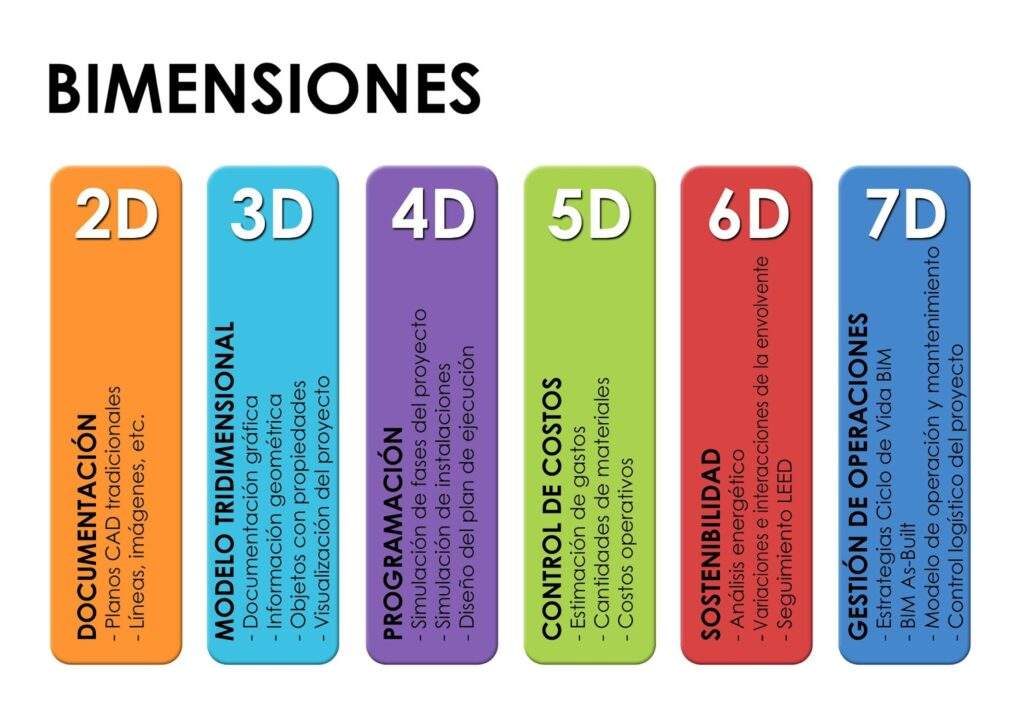BIM in 2025
status, trends, and challenges for the industry
The adoption of Building Information Modeling (BIM) in 2025 represents a qualitative leap forward: it is no longer just 3D modeling, but a data platform for decision-making, operation, and sustainability throughout the entire life cycle of a construction project. This quick introduction sets the focus of the article: how did BIM get to this point, what developments marked 2025, and what does it mean for engineers, designers, and construction managers?

In 2025, the perception of BIM evolved from a coordination tool to an information infrastructure: models now contain not only geometry, but also attributes, costs, scheduling (4D), energy performance, and operational data for facilities management. This increase in “data richness” makes the model the source of truth for design, execution, and operation, improving the traceability of decisions and reducing misinterpretations between disciplines. Industry studies and reports confirm improvements in timeframes and a reduction in changes on site when BIM is applied properly.
The integration of BIM with digital twins and data clouds has been decisive. In 2025, the union between BIM models and digital twins facilitated real-time simulations of energy performance, maintenance response, and structural behavior, enabling faster decisions in operation and during execution. This elevates the value of the model beyond the project stage, transforming it into an asset management tool.
Trends and standards within the BIM workflow
One of the most disruptive trends during 2025 was the incorporation of AI (including generative models and LLM) into the BIM workflow. Tools that read specifications in natural language, generate duct routing proposals, automatically detect conflicts, and suggest design alternatives became viable commercial solutions. AI did not replace technical expertise, but it accelerated repetitive tasks, enabled analysis of multiple options, and enhanced data-driven technical decision-making, with various vendors and industry analyses already documenting practical applications of AI-BIM in 2025.
Interoperability remained a central issue. In 2025, openBIM initiatives advanced with the adoption and update of the IFC 4.3 standard and its add-ons, expanding coverage to infrastructure typologies and facilitating the inclusion of environmental data and EPDs (Environmental Product Declarations). Organizations such as buildingSMART promoted the preservation of open data and consistency between tools, an essential condition for BIM flows to scale up in large-scale public and private projects. However, reality showed that interoperability is still incomplete: imperfect conversions, different levels of implementation, and ad hoc practices continue to generate friction between platforms.
Challenges and benefits of adopting it
Despite clear growth, the adoption of BIM in 2025 was not without challenges: initial investment in software and training, a lack of mature technical profiles, cultural resistance in traditional teams, and the need to adapt contractual processes to transfer responsibilities for the model. In emerging markets and SMEs, the lack of “successful pilot” projects limited the speed of implementation. In addition, data security and governance emerged as serious concerns: information-rich models pose confidentiality and intellectual property risks if not properly protected.
The evidence accumulated up to 2025 showed measurable benefits: reduction in rework and change orders, better 4D/5D coordination, energy optimization in design, and savings in operation. Research and market reports estimate significant increases in the value of BIM software and the BIM market, and academic papers confirm impacts on time and cost when applied with mature processes. However, the actual return depends on the context: projects with clear BIM governance and usage goals (not just modeling) achieve better results than one-off implementations without continuity.

Practical recommendations for teams and companies in 2025
For BIM to deliver on its promise in 2025, the best practices repeated in success stories are clear:
- Define usage objectives from the tender stage (what is expected of the model in operation, not just in design).
- Invest in practical training and certification for key profiles.
- Adopt openBIM standards and data exchange policies.
- Integrate AI and automation into repetitive tasks, but maintain expert technical control.
- Create security and governance protocols to protect data and intellectual property.
These actions turn technology adoption into a competitive advantage and reduce the risks of incomplete implementation.
In 2025, BIM is no longer a technocratic trend: it is the information infrastructure that enables the transition from isolated projects to connected, operable, and analytical assets. Advances in interoperability, integration with digital twins, and the arrival of AI made that year a turning point, but the full promise will only be realized if the industry overcomes cultural barriers, invests in talent, and adopts clear data policies. For engineers, designers, and managers, BIM represents an opportunity to lead evidence-based decisions, reduce risks, and deliver continuous value throughout the life cycle of built assets.